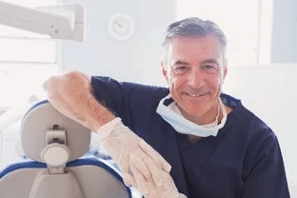 You set out on a road trip that you’ve been looking forward to for months. The bags are packed, the kids are with their grandparents, the dog is boarded, and the house is locked up. About 50 miles in, you realize you didn’t follow the directions, made a slight wrong turn, and are now about 49 miles off course. While it may not be quite as drastic, successful dental procedures also start with good directions.
You set out on a road trip that you’ve been looking forward to for months. The bags are packed, the kids are with their grandparents, the dog is boarded, and the house is locked up. About 50 miles in, you realize you didn’t follow the directions, made a slight wrong turn, and are now about 49 miles off course. While it may not be quite as drastic, successful dental procedures also start with good directions.
Just like the driver should have checked the map before hitting the road, surgeries using guided techniques have a specific path outlined for the procedure. This type of surgery uses technology for an individually-crafted surgical plan specific to a patient’s jaw and anatomy. As a result of smaller, more precise incisions, this type of surgery helps reduce the patient’s recovery time.
You need the best directions to get to your destination, and your doctor uses guided surgery techniques as their directions to get you the best results. Here’s a deeper explanation of image guided surgery, static guided surgery, and dynamic guided surgery using the X-Guide.
Image Guided Surgery
Image guided surgery is the general technique of using preoperative, computer-based diagnostic tools to facilitate prosthetic and surgical plans and procedures. In the case of dental surgeries, a virtual surgical plan is created by Dr. Emery in collaboration with your dentist using low-radiation, three-dimensional X-ray machines and then implemented using either a static guide or dynamic guidance. By using image guided surgery the doctor is more accurate and is able to reduce the incision size. With guided surgery, accuracy equals safety and the smaller incisions are safer, less risky, and lead to a less painful recovery.
Static Guided Surgery
Static guided surgery uses guide templates and drilling instruments fabricated prior to implant surgery. For example, after a beam computed tomography (CBCT) is taken to evaluate the implant site, a laser scan creates a virtual model of the patient’s jaw. The doctors then create a plan for the implant and send over the scans and model to a guide manufacturer. Doctors use the guide in surgery to place the implant with minimal or no incision.
A static guide cannot be altered during surgery to further reduce the risk of complication and inaccuracy. Static guides help ensure that the result of a patient’s surgery matches expectations.
Dynamic Guided Surgery Using X-Guide
Dynamic guided surgery using the X-Guide differs from static guide in that this system allows real-time image navigation and alteration of treatment during surgery. The technology, originated by neurosurgeons and other specialists, allows Dr. Emery to virtually see through the patient in real-time while operating and then guide their instruments accordingly. The doctors leverage the technology to place implants and perform other maxillofacial procedures. Since there is no need for a dental laboratory to fabricate a guide you can be treated quickly without delay. Dr. Emery also has the flexibility to change your plan at any time during surgery. The X-Guide has all the advantages of a static guide with improved accuracy, minimal pain, reduced risk and improved aesthetics but with even more flexibility.
At CCOMFS, it is our #1 goal is to reduce risks for patients and improve their outcomes. By using these surgical strategies and technologies, we are able to do just that. When it comes to safety and preparation, image guided surgery creates surgical plans that work for your mouth and meet your goals.
Which guided technique would work best for your dental procedure? Click here to book your consultation with Dr. Emery today or give us a call at our office in the Washington, DC area at (202) 386-7100.